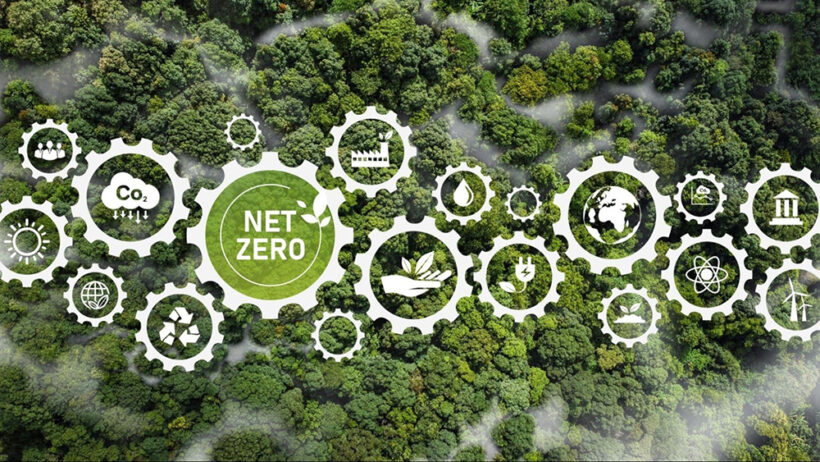Climate change is an issue that reverberates throughout every corner of our planet, influencing weather patterns, sea levels, and biodiversity. At the heart of this pressing problem lies carbon emissions, a crucial element often discussed yet sometimes misunderstood. To effectively combat climate change, one must first grasp the complexities surrounding carbon emissions—how they are generated, their environmental impacts, and the strategies available to mitigate their effects. Understanding carbon emissions is not merely an academic exercise; it is the foundation upon which effective climate activism can flourish.
Carbon emissions primarily stem from human activities, particularly the burning of fossil fuels for energy, industrial processes, and deforestation. When hydrocarbons such as coal, oil, and natural gas are burned, they release carbon dioxide (CO2) into the atmosphere. This greenhouse gas traps heat, resulting in a warming effect known as global warming. The consequences of global warming are manifesting in increased frequency and intensity of natural disasters such as hurricanes, droughts, and floods. As these phenomena become more pronounced, they illustrate a deteriorating climate that demands our immediate attention.
One common observation is the visible change in weather patterns. Fluctuations that previously occurred over decades are now evident within mere years. For instance, regions that once experienced predictable seasonality are facing unprecedented extremes in temperature and precipitation. This shift invites deeper contemplation. What drives these changes? The answer is inextricably linked to human activity, where anthropogenic factors have escalated natural carbon cycles to alarming levels. The Intergovernmental Panel on Climate Change (IPCC) reports that concentrations of CO2 in the atmosphere have surged to levels not seen in approximately three million years. This statistic should galvanize action.
The fascination with carbon emissions lies in their duality; they are both a product of our fossil fuel dependency and a pivotal key to our salvation. On one hand, carbon emissions symbolize the industrial advancements that have propelled global economies. On the other, they signify a perilous path towards environmental catastrophe. This juxtaposition frames the narrative of climate change as one not merely of fear, but of potential—for with the right understanding and actions, a transition to sustainable practices is not only feasible but essential.
To address carbon emissions effectively, it is essential to delve into the sources and types of carbon compounds. Carbon dioxide (CO2) is the most prevalent greenhouse gas, but it is not the sole contributor. Methane (CH4), released during the production and transport of coal, oil, and natural gas, is over 25 times more effective than CO2 at trapping heat in the atmosphere over a 100-year period. Its potency necessitates an urgent response focused on reducing emissions across multiple sectors. Understanding the complexities of each gas is critical to developing targeted solutions and policies.
Renewable energy emerges as a principal solution to curb carbon emissions. Technologies harnessing solar, wind, and hydroelectric power present viable alternatives to fossil fuels. These energy sources are inherently low in carbon output, and their adoption can drastically reduce the overall carbon footprint of energy consumption. Transitioning to renewable energy sources is more than a technological shift; it is a societal one. It requires collaboration among governments, businesses, and individuals to build infrastructure capable of supporting a low-carbon future.
Additionally, energy efficiency plays an integral role in battling carbon emissions. By utilizing energy more judiciously, we can diminish the amount of fossil fuel consumed. This can be achieved through modernizing buildings, enhancing public transportation, and implementing smart grids that optimize power distribution. The integration of such technologies not only facilitates reduced emissions but also promotes economic resilience and energy security.
Moreover, reforestation and afforestation serve as natural strategies to absorb excess CO2 from the atmosphere. Trees act as vital carbon sinks; they sequester carbon during photosynthesis, offsetting the amount released through human activities. Initiatives aimed at planting trees and restoring degraded forests present invigorating opportunities for climate action. Importantly, these efforts also enhance biodiversity, providing habitats for countless species and contributing to ecosystem stability.
Community engagement is another essential component in the fight against climate change. Grassroots movements often serve as catalysts for larger societal shifts. When individuals become aware of their carbon footprint, they can make informed decisions that collectively contribute to reducing emissions. This starts with education—workshops, seminars, and community projects illuminate the importance of sustainability and demonstrate feasible actions individuals can adopt in their daily lives.
While systemic change is indispensable, personal accountability cannot be overlooked. Each person’s decisions, from transportation methods to dietary choices, play a role in carbon emissions. Embracing sustainable practices, such as using public transit, reducing meat consumption, and minimizing waste, empowers individuals to contribute meaningfully to climate action.
Ultimately, the fight against climate change is inextricably linked to our understanding of carbon emissions. The more informed we become about the trends, sources, and impacts of these emissions, the better equipped we are to engage in meaningful dialogue and enforce change. This journey requires collective effort and unwavering commitment. As stewards of this planet, it is our responsibility to not only comprehend the urgency of the issue but to act decisively. The time for understanding is now, for every action counts in the monumental effort to combat climate change.







